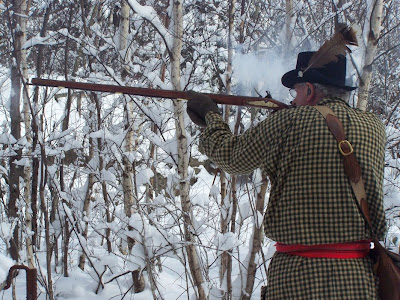 Seventy-five years ago, the Adirondacks were abuzz about a precocious athletic phenom, a plucky teenager who exhibited incredible abilities on the golf course. The best players across the region were impressed by this remarkable child who could compete with anyone on the toughest courses. In a man’s world, this youngster—a girl—could challenge the best of them.
Seventy-five years ago, the Adirondacks were abuzz about a precocious athletic phenom, a plucky teenager who exhibited incredible abilities on the golf course. The best players across the region were impressed by this remarkable child who could compete with anyone on the toughest courses. In a man’s world, this youngster—a girl—could challenge the best of them.
Marjorie Harrison, daughter of Neil and Eva, was born in 1918 in the town of North Elba. Her dad earned a living as a golf-club maker, eventually moving to Ausable Forks to assume the position of club professional at the Indole Course.
Having first wielded a club at the age of three, young Marjorie began developing her golfing skills on the local links. In a shocking glimpse of future possibilities, she won the women’s cup at Indole in 1928 when she was just ten years old.
In 1932, the loss of her mom, Eva, to pneumonia, tested Margie’s inner strength, but that was something the young girl never lacked. With few team sporting possibilities available to girls, she excelled at horseback riding, skating, skiing, shooting, and, of course, golf, which are largely solo pursuits requiring heavy doses of self-reliance.
Neil soon began to eye the amateur golf tour as a challenge for his highly skilled daughter. In sports, the term amateur revealed nothing in regards to talent—it only meant that a competitor was unpaid, and thus pure (unsullied by the world of professional athletics).
At that time, there was no golf tour for women professionals. Nearly all the best players competed for cups, trophies, prestige, and for the sake of competition. Turning pro was rare. Only a few of the top women players were signed to represent major sporting goods companies. Once money was accepted, they forfeited all eligibility to compete in amateur events. Men lived in a different world, but for women, a professional golf tour was more than a decade away.
In August, 1933, Marjorie Harrison played in the state event at Bluff Point just south of Plattsburgh, where an international field offered stellar competition. She fairly burst onto the New York golfing scene, battling to the semifinal round, where a seasoned opponent awaited.
Incredibly, Margie went on to lead her semifinal match by one hole going to the 18th (nearly all tournaments featured head-to-head match play). There, she faltered, three-putting the final green to lose her advantage. But with steely resolve, Margie parred the single playoff hole for the win, sending her to the finals.
In the championship round she faced Mrs. Sylvia Voss, an outstanding golfer who promptly won the first three holes, putting Margie far behind. Bringing her power game to the fore, Harrison tied the match by the 14th and led by one at the 17th, but lost the last hole to finish in a tie. Just like in the semifinals, a playoff was necessary.
And, just like in the semifinals, Marjorie holed a par putt to win on the first playoff hole. She was barely 15 years old and had conquered some of the best golfers in an international tourney.
From Boston to Dallas to the West Coast, newspapers touted her great accomplishment. The New York Times wrote, “Swinging a wicked driver and with iron shots of unusual precision … Marjorie Harrison of Au Sable Forks won her first major golf tourney today.” She was also featured in The American Golfer magazine for the Bluff Point win.
In 1934, Marjorie, 16, made it once again to the finals at Bluff Point, where she was set to face Dorothy Campbell Hurd, a golfing legend. Hurd, 51, owned 749 victories, 11 national amateur titles, and once held the American, British, and Canadian titles at one time.
They played even through 16 holes, but Hurd pulled out the win on the final two greens. A gracious opponent and future member of the World Golf Hall of Fame, Hurd was clearly impressed, saying, “With a little more experience, no woman golfer will be in the same class with Miss Harrison. She is a future champion that bears watching by the leading golfers.”
Hurd was right—there was much more to come, including several wins over the next few years. Margie finished near the top in virtually every tournament she entered. Some were very gutsy performances featuring remarkable comebacks, but most were head-to-head battles where mistakes seemed to have no effect on her. She was one tough competitor, always playing with grace, humility, and great determination.
In 1935, Marge finished second in the New York State Championships, and then reached the semifinals each of the next three years. Another major breakthrough came in July, 1937, when she shot a 37 on the final 18 holes at Rutland, Vermont (near her dad’s home area of Castleton) to win the Vermont state title. She was just a few months past her 19th birthday.
At Brattleboro in 1938, Marjorie successfully defended her Vermont title with a birdie on the 15th hole to clinch the win. Other highlights that year included shattering the course record at Bluff Point- winning at Lake Placid- and teaming up with the legendary Gene Sarazen in a remarkable comeback to win a benefit tourney.
For years, Marjorie was at the top of New York’s competitive golfing scene, which attracted some of the best players in the country. Despite the high level of play, it was considered an upset NOT to see her name in the semifinals of any tournament she entered. Whether in Quebec, Syracuse, the Berkshires, Briarcliff, or anywhere else she competed, the North Country’s ambassador of golf was respected and admired for her sportsmanship and fine play.
Many club titles were won and course records set by Marjorie, including at Bluff Point, Lake Placid, Albany, and Troy. She wowed the crowd at Sulphur Springs, West Virginia, battling fiercely to finish second in the Mason-Dixon tournament. Some golf writers pointed out that unlike athletes from warm-weather areas, Miss Harrison achieved great success despite playing only a few months of the year, and while attending high school and different colleges.
Though still a youngster, she returned to Ausable Forks in 1940 for a career review at a testimonial dinner—and for good reason. A few days earlier, at the age of 22, Marjorie had overwhelmed all comers and captured the New York State Women’s Golf Championship.
She maintained her winning ways, but during the World War II years, sports were sharply curtailed across the country to conserve fuel for the troops. Opportunities were meager, but Margie picked up two wins in 1944, followed by a stellar performance that led her once again to the finals of the New York State Championship Tournament.
Her talented opponent in the finals, Ruth Torgersen, was a very familiar combatant from many past matches. Torgersen, in fact, would go on to win a record seven NYS championships and be named New York’s Golfer of the Century.
On this day the two stars battled for 32 holes, at which point Marjorie held a three-hole lead. But on the 33rd, a stroke of bad luck left her ball balanced atop a bunker. Deemed an unplayable lie, it cost her the hole as Torgerson was quick to take advantage and cut the deficit to two.
Undaunted, Margie looked down the fairway of the 346-yard 16th hole and blasted a 200-yard drive. She nearly holed her second shot from 146 yards out, and then tapped in an easy putt for her second New York State title.
In that same year, the Women’s Professional Golf Association was formed, to be replaced six years later by the LPGA. Had she been born years later, there’s a good chance the girl from the Adirondacks would have won a good deal of prize money. For Marjorie Harrison, though, life took a different path.
After completing college, she had begun a career as a physical education teacher. In June, 1946, while still competing and winning, she married Bart O’Brien, himself a star golfer at Indole, the Ausable Forks course managed by her father, Neil.
For a while she competed as Marjorie Harrison O’Brien, but when Bart took a job teaching in the Oneida school system, they moved there and began raising a family. Semi-retired, Marge played occasionally in tournaments, but by 1954 she was busy raising three children, teaching, and becoming a very active participant in the community.
She began giving adult golf lessons, and children’s lessons soon followed. Bart became school principal, and together he and Marjorie maintained a high profile as community leaders. Honors were bestowed on both of them for their work in the school system, and in 1970 she was chosen as an honorary life member of the Oneida school district PTA.
In 1973, Marjorie was named Outstanding Citizen by the Oneida Rotary, and Bart was cited several times for his work on behalf of the organization. Through it all, they maintained close ties annually with family in the Ausable Forks area, where her dad, Neil, still held the position of golf pro at Indole through the mid-1960s.
Marjorie Harrison O’Brien passed away in 1999, and Bart died in 2004—two natives the North Country can truly be proud of.
Photo: Young Marjorie Harrison, golfer extraordinaire.
Lawrence Gooley has authored ten books and dozens of articles on the North Country’s past. He and his partner, Jill McKee, founded Bloated Toe Enterprises in 2004. Expanding their services in 2008, they have produced 20 titles to date, and are now offering web design. For information on book publishing, visit Bloated Toe Publishing.








